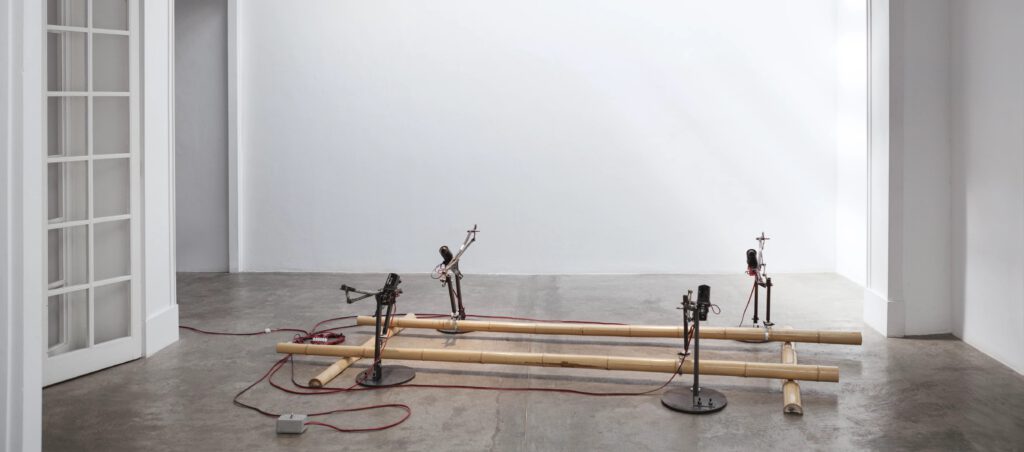
Exhibition View: Art Nou 2022, H2O Gallery, Barcelona
Tinikling.exe
A machine stutters. Metal arms snap together, gnashing like mechanical jaws. Bamboo poles collide, a violent clap echoing through the space. The rhythm is both erratic and relentless—too forceful to be graceful, too (un)precise to be human/machine. A foot hovers over a pedal, hesitant. To step is to activate the machine. To activate the machine is to invoke the past.
The installation resurrects the choreography of Tinikling, a folk dance that is at once a celebration and a reenactment of colonial punishment. In the Spanish-occupied Philippines, those who failed to meet their labor quotas were forced between bamboo poles that clapped against their ankles—an improvised device of discipline, later transformed into ritual. The dance is an algorithm of survival: a body forced to adapt to rhythms not of its own making, leaping between violent constraints, improvising within the logic of colonial rule.
Here, the human dancer is absent. Instead, robotic limbs—scavenged from the wreckages of the extractive automobile industry—inherit the task of mechanical violence. The bamboo, once a tool of both punishment and play, now performs autonomously, detached from its historical operators. The machine does not dance. It does not remember. It only executes.
But somewhere between execution and repetition, a question arises; who or what is the subject of this performance? The colonial apparatus has long automated itself—economic policies, surveillance technologies, global labor flows—each iteration more abstracted than the last. The tinikling bird, evading its captors, has become data. The foot hovers over the pedal. A decision lingers. In the gaps between movement and machinery, between history and code, resistance is rewritten.